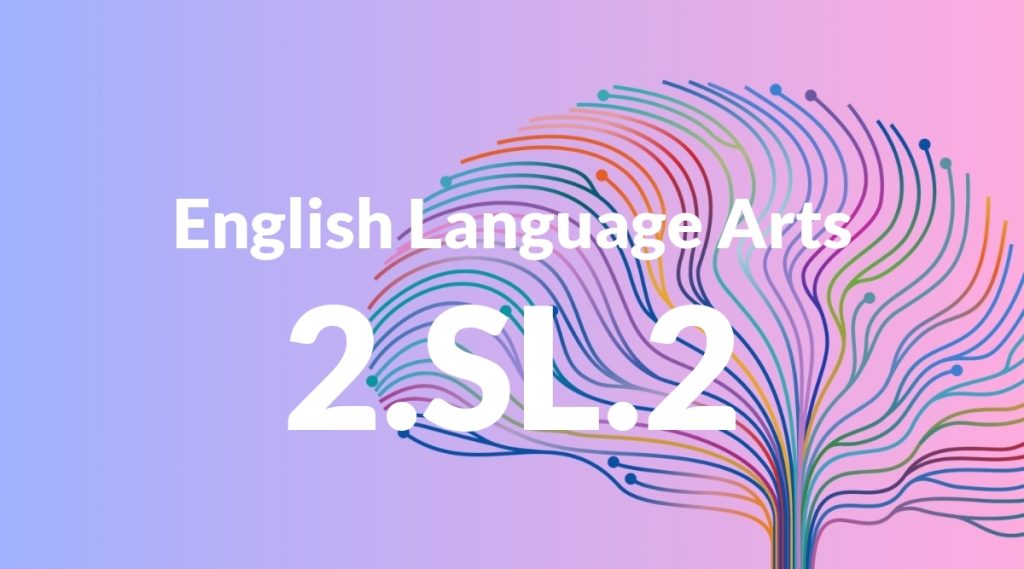Standard: 2.SL.2 – Recount or describe key ideas or details from a text read aloud or information presented orally or through other media.
Grade level: Grade 2
Subject: English Language Arts
Domain: Speaking & Listening
Teacher Overview
This standard focuses on students’ ability to recount or describe key ideas or details from texts read aloud or information presented orally or through other media. It is crucial for developing listening and comprehension skills, which are foundational for all areas of learning. Students should have the ability to listen attentively and recall simple details from short texts or oral presentations.
Students will develop skills in critical listening, summarizing longer texts, and making connections between different pieces of information presented in various formats.
Common Misconception 1
Students may think they need to remember every single detail. This is incorrect because the standard emphasizes key ideas and main points rather than every detail.
Intervention 1
Use graphic organizers like story maps to help students identify and focus on key ideas and main points.
Common Misconception 2
Students may believe that their own opinions or interpretations are more important than the actual details presented. This is incorrect because the standard requires accurate recounting of information, not personal interpretation.
Intervention 2
Practice activities that differentiate between factual recounting and personal opinion, such as ‘Fact vs. Opinion’ exercises.
Prerequisite Knowledge
Students should be able to listen attentively, understand basic story elements, and recall simple details from short texts or oral presentations.
Subsequent Knowledge
Students will develop skills in critical listening, summarizing longer texts, and making connections between different pieces of information presented in various formats.
Instructional Activities
- Read a short story aloud and have students recount the main events.
- Watch a short educational video and ask students to describe the key details.
- Listen to a guest speaker and have students summarize the main points.
- Use graphic organizers to help students identify key ideas and details from a text.




